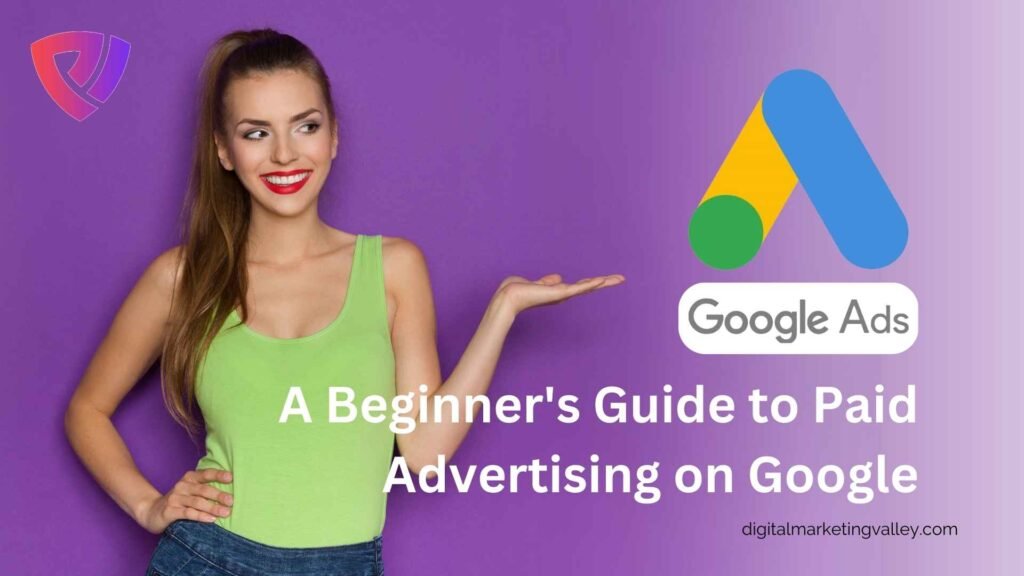Google Ads: A Beginner's Guide to Paid Advertising on Google
Are you a business owner looking for ways to attract more customers online? Have you heard about Google Ads but don’t know where to start? Look no further! In this beginner’s guide, we will explore the world of paid advertising on Google and how you can use it to grow your business.
Table of Contents
ToggleIntroduction
Google Ads is an online advertising platform developed by Google that allows businesses to place ads on Google search results, YouTube, and other websites. With Google Ads, businesses can target specific audiences based on their location, interests, and search terms, among other factors. As a result, your advertisements will be displayed to individuals who are more inclined to have an interest in your products or services.
Google Ads offers several ad formats, including text, image, and video ads. Each format has its own set of requirements, but they all share the same goal: to attract customers to your website and increase conversions.
Let’s dive into the basics of Google Ads and how you can use it to drive more traffic to your website.
How Google Ads Works
To start advertising on Google, you need to create a Google Ads account and set up your first campaign. A campaign is a group of ads that share a budget, targeting settings, and other parameters. Within each campaign, you can create ad groups that contain specific ads and keywords.
Here’s how the process works:
- Choose your campaign type: Google Ads offers several campaign types, including Search, Display, Video, and Shopping campaigns. Each type is designed to achieve different goals, so choose the one that best suits your business needs.
- Set your budget: You can set a daily budget for your campaign, which determines how much you are willing to spend on ads each day. The pay-per-click (PPC) framework of Google Ads implies that you are charged solely when a user clicks on your advertisement.
- Choose your target audience: You can target specific audiences based on their location, age, gender, interests, and search terms. This helps ensure that your ads are seen by people who are most likely to be interested in your products or services.
- Create your ad: You can create text, image, or video ads, depending on the ad format you choose. Your ad should be compelling and relevant to your target audience, with a clear call-to-action (CTA) that encourages them to click through to your website.
- Choose your keywords: You can choose specific keywords that trigger your ads to appear when someone searches for them on Google. Keywords should be relevant to your business and products or services.
- Launch your campaign: Once you’ve set up your campaign, ad groups, ads, and keywords, you can launch your campaign and start attracting customers to your website.
Benefits of Google Ads
Google Ads offers several benefits for businesses looking to increase their online visibility and attract more customers. Outlined below are several of the key advantages of utilizing Google Ads:
- Increased website traffic: By advertising on Google, you can attract more customers to your website and increase your overall website traffic.
- Targeted advertising: With Google Ads, you can target specific audiences based on their location, interests, and search terms. This helps ensure that your ads are seen by people who are most likely to be interested in your products or services.
- Google Ads is a cost-effective solution since it operates on a pay-per-click (PPC) basis, meaning you are only charged when a user clicks on your ad. This renders it a financially efficient method to promote your business on the internet.
- Measurable results: With Google Ads, you can track the performance of your ads and see how many clicks, impressions, and conversions you are receiving.This assists you in gauging the efficacy of your campaigns and enables you to make informed decisions based on data.
Creating Effective Google Ads
To create effective Google Ads that attract customers and drive conversions, follow these best practices:
- Use clear and concise messaging: Your ad should have a clear message that communicates the value of your products or services. Use concise language and focus on your unique selling proposition (USP) to grab the attention of your target audience.
- Include a strong call-to-action (CTA): Your ad should include a clear and compelling CTA that encourages people to click through to your website.Incorporate action-oriented language such as “buy now” or “learn more” to instill a sense of immediacy. Opt for pertinent keywords that align with your business and offerings.
- Employ suitable keywords that pertain to your enterprise and its offerings.. Use the Google Keyword Planner tool to research keywords and see how often they are searched for.
- Test different ad formats: Experiment with different ad formats, such as text, image, and video ads, to see which ones work best for your business. Test different headlines, images, and CTAs to see which ones attract the most clicks.
- Track and modify your campaigns: Keep a close eye on your campaigns’ performance and make alterations as necessary. Use Google Ads reporting tools to track metrics like clicks, impressions, and conversions, and adjust your bids, targeting settings, and ad copy to improve performance.
Conclusion
Google Ads is a powerful tool for businesses looking to attract more customers online. By creating effective ads and targeting specific audiences, you can increase your website traffic and drive more conversions. Follow best practices for creating effective ads, monitor and adjust your campaigns, and use reporting tools to measure success. With these tips and tricks, you can make the most of your Google Ads campaigns and grow your business online.
Handpicked Related Article: Best Social Media Management Software of 2023
FAQs
There is no minimum budget for Google Ads, but you should set a budget that aligns with your business goals and the competitiveness of your industry.
Use the Google Keyword Planner tool to research keywords that are relevant to your business and products or services. Select keywords with high search volume and minimal competition.
To improve your CTR, use clear and concise messaging, include a strong CTA, and use relevant keywords. Test different ad formats and ad copy to see which ones attract the most clicks.
Use Google Ads reporting tools to track metrics like clicks, impressions, and conversions. Set up conversion tracking to measure how many people are taking specific actions on your website, such as making a purchase or filling out a form.
Yes, you can run Google Ads on a limited budget. Set a daily budget that aligns with your business goals and adjust your bids and targeting settings to maximize your budget.
Latest Articles






